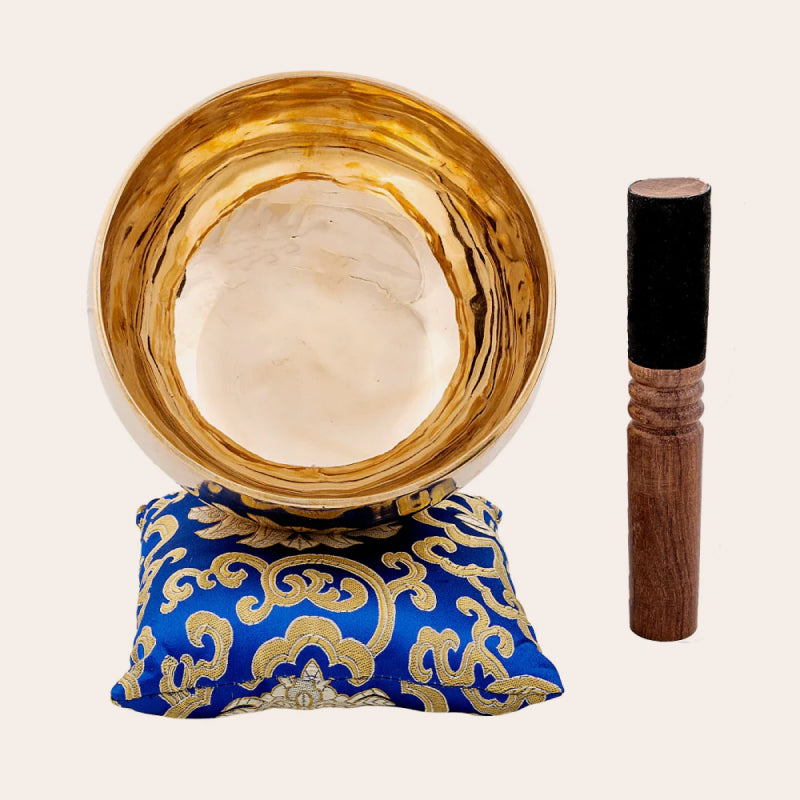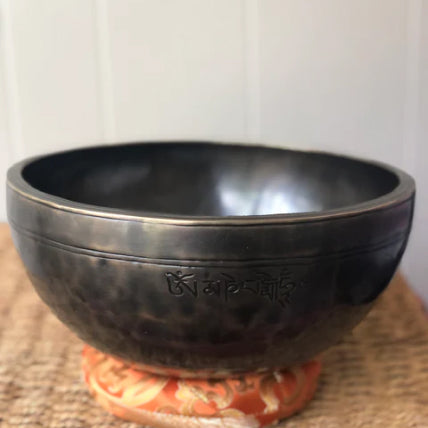From electronic compositions to physical applications (like "regular music" or singing bowls) in therapeutic practices, binaural and monaural beats offer unique paths to changing your state.
In this article, we'll cover the science behind binaural and monaural beats, and explore their benefits with a focus on research-backed evidence.
Clarifying: Binaural Versus Monaural Beats
Binaural beats come from the perception of a third frequency when two slightly different frequencies are presented to each ear. This phenomenon results from the brain's processing of the difference between the two frequencies and has been extensively studied in the context of auditory perception and brainwave synchronization.
On the other hand, monaural beats are generated by presenting two tones of slightly different frequencies simultaneously, leading to an interference pattern that creates a perceived beat. While similar in their ability to influence brainwave activity, binaural and monaural beats differ in their method of generation and perceptual effects.
The Science Behind Binaural Beats: Brainwave Synchronization and Altered States of Consciousness
Research suggests that binaural beats can modulate brainwave activity, particularly in the alpha, theta, and delta frequency ranges associated with relaxation, meditation, and deep sleep.
Electroencephalography (EEG) studies have demonstrated that exposure to binaural beats can synchronize brainwave patterns, leading to states of enhanced relaxation and altered states of consciousness.
Additionally, neuroimaging studies have provided insights into the neural mechanisms underlying the effects of binaural beats, highlighting the involvement of cortical and subcortical regions in auditory processing and emotional regulation.
Deciphering Monaural Beats: Auditory Interference Patterns and Cognitive Effects
Monaural beats, while less studied than binaural beats, also hold promise as a therapeutic tool in sound therapy.
By presenting two tones of slightly different frequencies simultaneously, monaural beats create an auditory interference pattern that influences brainwave activity.
Studies investigating the cognitive effects of monaural beats have reported improvements in attention, memory, and cognitive performance, suggesting their potential utility in enhancing cognitive function and mental clarity.
Further research is needed to elucidate the underlying mechanisms of monaural beats and their specific applications in therapeutic contexts.
Applications in Sound Therapy: Enhancing Relaxation and Mental Well-being
Both binaural and monaural beats are utilized in sound therapy to induce specific mental states and facilitate relaxation. Electronic compositions incorporating these beats are designed to guide listeners into desired states of consciousness, promoting meditation, stress reduction, and improved sleep quality. In clinical settings, binaural and monaural beats have been incorporated into therapeutic interventions for anxiety, depression, and sleep disorders, demonstrating their potential as non-pharmacological interventions for mental health management.
Physical Applications in Therapeutic Practices: Vibroacoustic Therapy and Beyond
In addition to electronic compositions, physical manifestations of binaural and monaural beats are employed in therapeutic practices such as vibroacoustic therapy.
Through the application of low-frequency vibrations directly to the body, these beats promote relaxation, pain relief, and cellular rejuvenation. Research on vibroacoustic therapy has shown promising results in alleviating symptoms of chronic pain, fibromyalgia, and stress-related disorders, highlighting the potential of physical modalities in sound-based interventions.
Benefits and Distinctions: Harnessing the Power of Sound for Health and Vitality
While binaural and monaural beats share similarities in their ability to influence brainwave activity and induce relaxation, they offer distinct perceptual and cognitive effects.
Binaural beats are characterized by their stereo separation and perceptual integration, while monaural beats result from the interference pattern created by simultaneous presentation.
Both types of beats offer benefits in promoting relaxation, stress reduction, and enhanced mental well-being, making them valuable tools in sound therapy and holistic health practices.
Incorporating Binaural and Monaural Beats into Daily Practice: Practical Tips for Enhanced Well-being
Now that we've explored the science behind binaural and monaural beats, let's discuss practical ways to incorporate these therapeutic tools into your daily routine for maximum benefit.
-
Mindful Listening Sessions: Set aside dedicated time each day for mindful listening sessions with binaural or monaural beat compositions. Find a quiet and comfortable space where you can relax without distractions, and allow yourself to fully immerse in the auditory experience.
-
Meditation and Relaxation Practices: Use binaural or monaural beats as accompaniment during meditation or relaxation exercises. Focus on your breath, body sensations, or a specific visualization while allowing the beats to guide you into a deeper state of relaxation.
-
Morning and Evening Rituals: Start and end your day with binaural or monaural beats to establish a sense of calm and focus. Incorporate them into your morning routine to set a positive tone for the day ahead, and use them in the evening to unwind and prepare for restful sleep.
-
Work and Study Enhancement: Enhance your productivity and concentration during work or study sessions by listening to binaural or monaural beats in the background. Choose compositions with frequencies tailored to your desired mental state, whether it's increased focus, creativity, or stress reduction.
-
Sleep Support: Create a soothing bedtime ritual by listening to binaural or monaural beats designed to promote deep relaxation and sleep. Allow the gentle rhythms to lull you into a state of tranquility, making it easier to drift off and experience restorative sleep.
-
Experimentation and Personalization: Explore different types of binaural and monaural beat compositions to find what resonates best with you. Experiment with varying frequencies, durations, and styles to tailor your sound therapy practice to your unique preferences and needs.
-
Integrating Tibetan Singing Bowls: Incorporate the soothing sounds of Tibetan singing bowls into your sound therapy practice for an added dimension of relaxation and harmony. Experiment with using singing bowls alongside binaural or monaural beats, allowing the resonant tones to complement and enhance the therapeutic effects of the beats. Whether used in conjunction with meditation, relaxation, or sleep practices, Tibetan singing bowls can serve as powerful tools for promoting inner peace and well-being.
By integrating these practical tips into your daily life, you can harness the power of binaural and monaural beats, along with Tibetan singing bowls, to promote relaxation, enhance focus, and cultivate a greater sense of well-being.
You can listen to, and consider our handmade singing bowls here.
Remember to approach your sound therapy practice with an open mind and a spirit of curiosity, allowing yourself to fully experience the transformative effects of these therapeutic tools.










